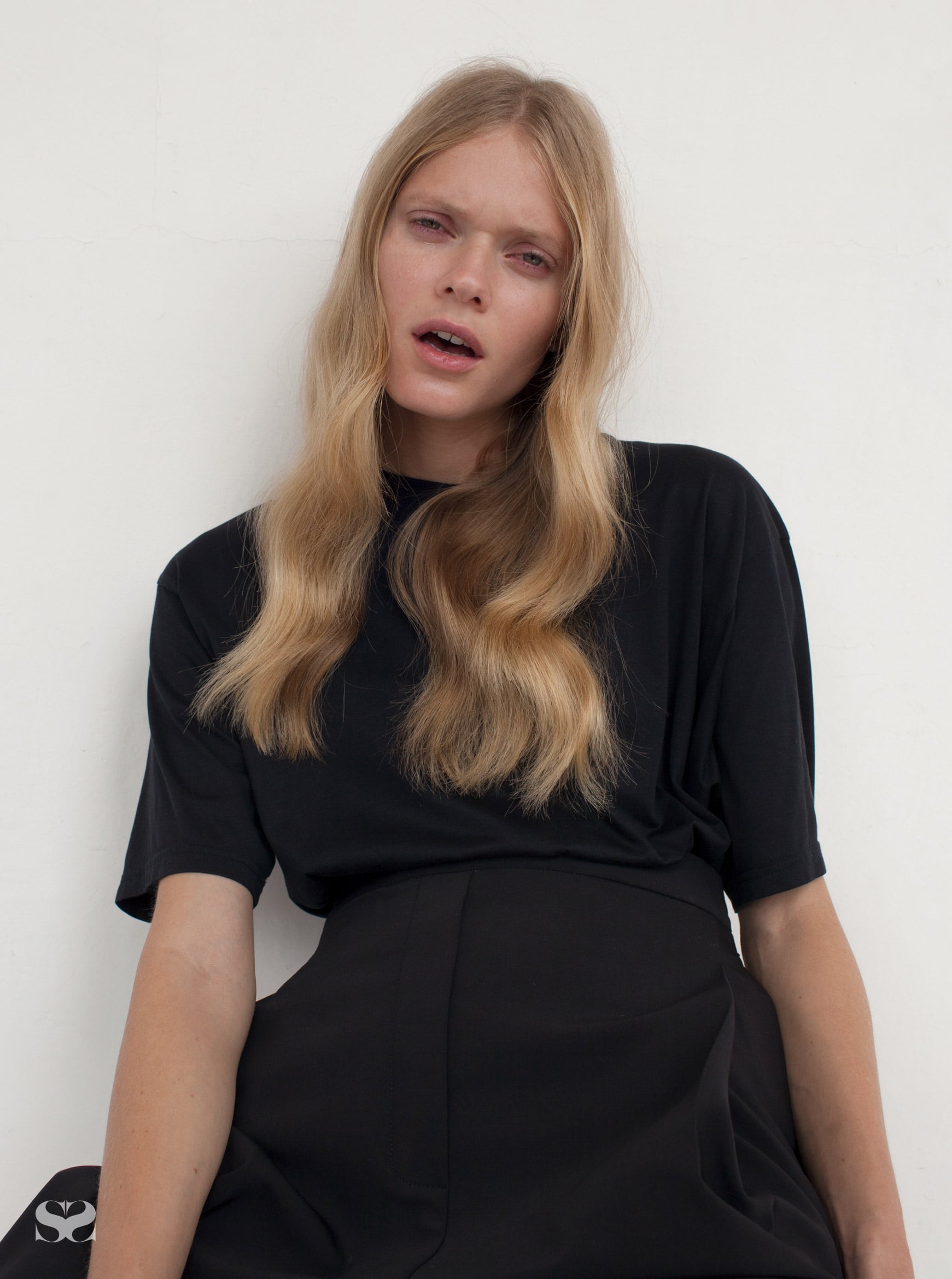
There has been much crying of late in my world. It seems the lakes of emotion we carry inside us are bottomless. Only exhaustion stems the flow ... or a kind of numbness that freezes the trickle of liquid from the eyes. It is unclear why we cry psychic tears. There is a relief that comes with tears, certainly, a physical manifestation of an emotional overflow that seems to somehow be the only way we can express what we are feeling inside – for all those times when there are no words, not enough words, not the right words, no space left for words. Tears of dust, physical irritation, basal tears, all make sense. But tears of emotion seem to exist in a different space.
I first came across Rose-Lynn Fisher’s photographs of tears last year and they have haunted me ever since. During a period of grief of her own, she decided to turn her cousin’s Carl Zeiss microscope onto the composition of tears. Trapping tears between slides of glass and photographing them through the microscope, she was able to capture their crystalline composition, to use the tools of science to make art.
What Fisher found is that the salty residue seems to take very different forms depending on the kind of tear that is shed; in other words, depending on why we are crying.
Tears shed from the irritation of an onion manifest structurally completely differently from those shed, say, in grief at the loss of a beloved dog. There are bubbles and shapes and patterns, different densities and compositions – each tear seems to be as unique as a snowflake, and as delicately built.
The photographs themselves are stunning and feel like entire landscapes seen from the sky; they mimic the macro in the micro, offer the repeating patterns of the Earth’s physical manifestations in a single drop. Some tear-crystals mimic jagged cliffs, others dry creek beds or snowflakes, coral formation, algae, frozen lakes ... Suddenly all sense of scale and perspective falls away and we are inside something enormous and unknowable, an undiscovered terrain at once microscopic and yet cosmic in its scope.
Fisher is an artist not a scientist, and her photography leans into the poetic space, rather than trying to come to any sort of scientific conclusion about the biology of our lachrymosity. Each photograph is gently titled and seems to ask you to read the topography for clues as to why, for example, “tears for those who yearn for liberation” should look so utterly different from those shed for “redemption”; why “tears of elation at a liminal moment”, with their spare, tree-like form, should be so utterly different from the tear-crystals that form in “ending and beginning”. The titles feel like fragments of bigger stories, like sentences you have stumbled upon half-way through ... This is intentional, a way of keeping open the circle of meaning and interpretation. Words, suggests Fisher, can be too blunt.
“You’re trying to bring words into something that’s wordless, trying to describe something that exists perfectly well on its own. The thing with crying is that so often the very power of that moment is precisely because you can’t talk. There aren’t words with it. It’s something that is so direct. And then, all of a sudden, there’s a release, like after a storm.”
Fisher’s photographs are carefully selected topographies, maps that take us back to imagined places charged with nostalgia, to forgotten emotions, people lost, mourned ... they contain worlds both physical and emotional. They fuse the two.
The echoes of macro worlds in miniature ones reawaken for me the wonder at the idea that everything truly is One – that nature repeats its structures over and over again, that we carry whole worlds within us, cry territories, landscapes, deserts and seas ... Our biological patterns are what position us within our universe. We are the totality, and we are nothing.
Tears are mundane in daily life, a human response we see every single day. Toddlers scream in the street, a teenage girl hurries by, hiding her red, weeping face, the advertisement on television shows an elderly couple in tears of joy. Tears are a form of emotional punctuation, as well as a performance – whether in public or private – of intense emotion.
Biologically, tears are more easily organised into categories. Our body makes three kinds: basal tears (the functional fluid that keeps your cornea lubricated), reflex tears (the ones that help clear your eye of irritations such as dust, smoke or onion vapours), and psychic tears (the ones we imagine when we think of someone ‘crying’).

Psychic tears flow during strong emotion provoked by fear, stress, suffering, pleasure, anger, love, grief, physical pain, frustration ... We look at photos of lost loved ones, we hear a song associated with a past love ... The limbic system in our brain – more specifically the hypothalamus – is wired into our autonomic nervous system. We can’t control it. Our emotional responses trigger our nervous system, and this in turn orders the production of tears.
“Tears are a positive representation of who we are,” writes Dr Nick Knight on the subject. “[Crying] demonstrates not only our deep emotional connections with our world – past, present, and future – but allows us to visibly celebrate that fact.” However, psychic tears seem to have no clear purpose outside of the emotional. Is crying a way to telegraph emotion? A way to bond others to us, to evoke sympathy and empathy? What is the purpose of this sort of – quite literally – emotional outpouring? That you feel better after a good cry is due in part to the secretion of a natural painkiller (leucine-enkephalin), along with the subsequent release of emotional stress.
Scientists still believe humans are the only animals that cry psychic tears. Our tears are embedded in our emotional history; why we cry evolves with our growing empathy as we get older, and tears take on a purifying and ritualistic element. In the Old Testament, David says to God, “You have stored my tears in your bottle and counted each of them.”
Certainly, we are the only animals that imbue our tears with such ritualistic and symbolic meaning. We have a history of storing tears – keeping them in little bottles – in times of grief, especially. The tradition is both pagan and Christian. Ancient Roman, Egyptian and Greek civilisations had tear bottles, supposedly holding tears, but possibly also sacred oils and perfumes. These were placed in tombs as a symbol of respect, but also of love, grief, remorse and guilt. In Victorian times, people in mourning stored their tears in bottles. The period of mourning was over when all the tears had evaporated. Lovers wrenched apart – the soldiers and sailors and mercenaries of the world – kept tear bottles too; in the American Civil War, women cried into special tear bottles and kept them until their husbands returned safely from war. The little bottles of tears were proof of how much their men were loved and missed.
Tears seem to be the overflows of deep wells of emotion and empathy.
In simple tears, we see the full expression of the mystery that lies at the heart of what it is to be human. If our eyes express the landscapes of our humanity, our tears are their atlases.
“It’s such a secret place, the land of tears,” wrote Antoine de Saint-Exupéry in The Little Prince.
We humans are a sum of complex anatomical parts, and yet we are integrated emotionally; we find it almost impossible to put our feelings in one place and our thoughts in another. We should be able to hold two completely opposing beliefs at one time, and understand them both to be true, to have proper perspective.
The ability of humans to contemplate their own existence, to question the meaning of their lives, is still unique. As super-intelligent machines begin to play a much greater role in our lives and, in the foreseeable future, with technology mimicking (and far surpassing) our potential to do tasks, and taking over things that we thought were in the realm of human capacity alone – cooking, creating art, killing – what significance will the mysteries we human beings still hold within us have? What value? Is the unknowable something that lies at the very heart of what makes us human? How will the seeds of wonder be restored, and thus our humility in the face of what we still don’t fully comprehend?
All living things contain within them that precious, obscure germ of creation: spontaneous life. Fisher’s photographs of tears, for me, are a way into the heart of this beautiful Unknown, into the core of what it means to be human, a gracious and stunning reminder that, as Carl Sagan wrote, “Somewhere, something incredible is waiting to be known.” The beautiful thing is that we are still waiting to know; not everything is explicable without an element of faith and wonder, aligned to science and experience. There are still reasons for poetry, still reminders that a truly open mind requires humility, and a willingness to accept that there are still mysteries at the heart of what it means to be human. We should celebrate that.
FASHION Ellen Presbury
MODELS Thais Custodio @ Kult Australia, and Kseniya Piatsevich @ Chic Management
HAIR Anthony Nader @ DLMAU
MAKEUP Isabella Schimid @ Union Management using Charlotte Tilbury



